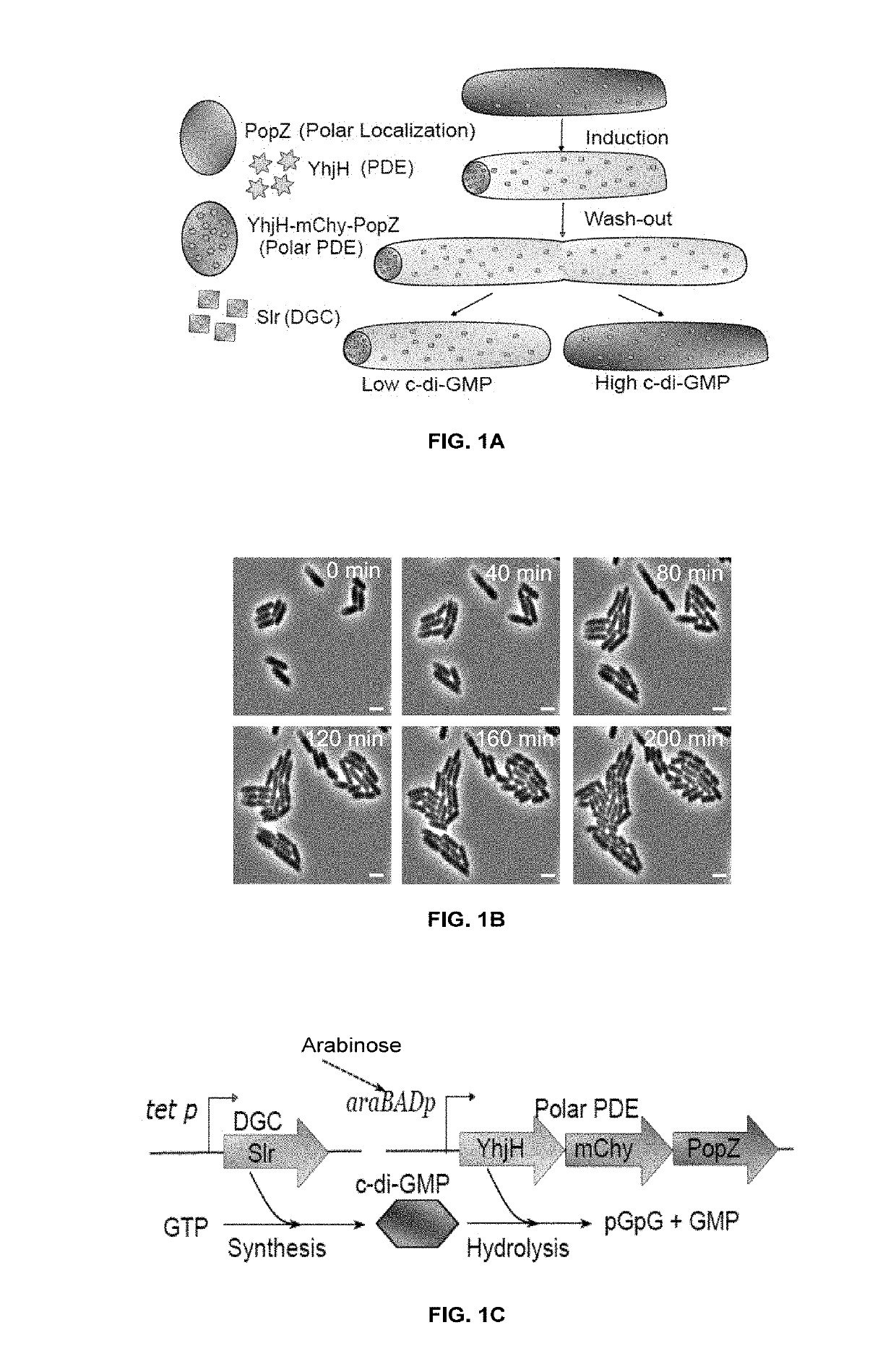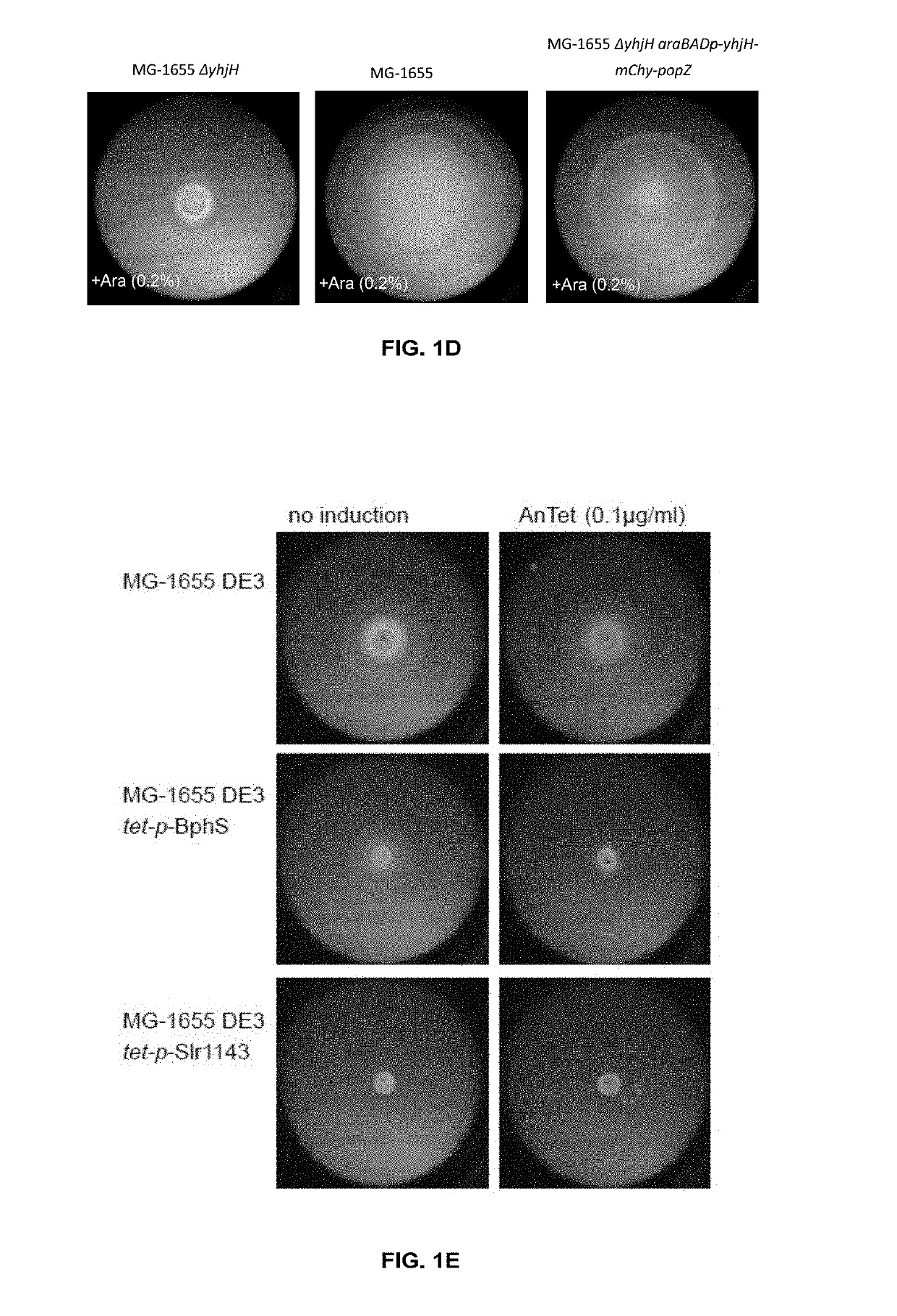Microbial stem cell technology
- Summary
- Abstract
- Description
- Claims
- Application Information
AI Technical Summary
Benefits of technology
Problems solved by technology
Method used
Image
Examples
Embodiment Construction
[0059]The present disclosure relates to microbial stem cell technology that enables a growing microbial culture to stably maintain two or more distinct cell types in a ratio that can be genetically programmed and / or dynamically controlled during cultivation. It is contemplated that embodiments described herein can be utilized to increase product yield in microbial fermentations and advanced engineering of biomaterials using genetically engineered microbial cells, among others.
[0060]Asymmetric bacterial cell division produces daughter cells with different identities and patterns of gene expression. Polarized distributions of regulatory proteins and the associated asymmetry in signaling networks within bacterial cells often influence such division and gene expression. Cellular division and gene expression are fundamental to multicellular development and the benefits that are derived from collaborating cell types.
[0061]In one embodiment, a method for inducing a program of asymmetric ce...
PUM
| Property | Measurement | Unit |
|---|---|---|
| Polarity | aaaaa | aaaaa |
| Ratio | aaaaa | aaaaa |
| Gene expression profile | aaaaa | aaaaa |
Abstract
Description
Claims
Application Information
 Login to View More
Login to View More - R&D
- Intellectual Property
- Life Sciences
- Materials
- Tech Scout
- Unparalleled Data Quality
- Higher Quality Content
- 60% Fewer Hallucinations
Browse by: Latest US Patents, China's latest patents, Technical Efficacy Thesaurus, Application Domain, Technology Topic, Popular Technical Reports.
© 2025 PatSnap. All rights reserved.Legal|Privacy policy|Modern Slavery Act Transparency Statement|Sitemap|About US| Contact US: help@patsnap.com



